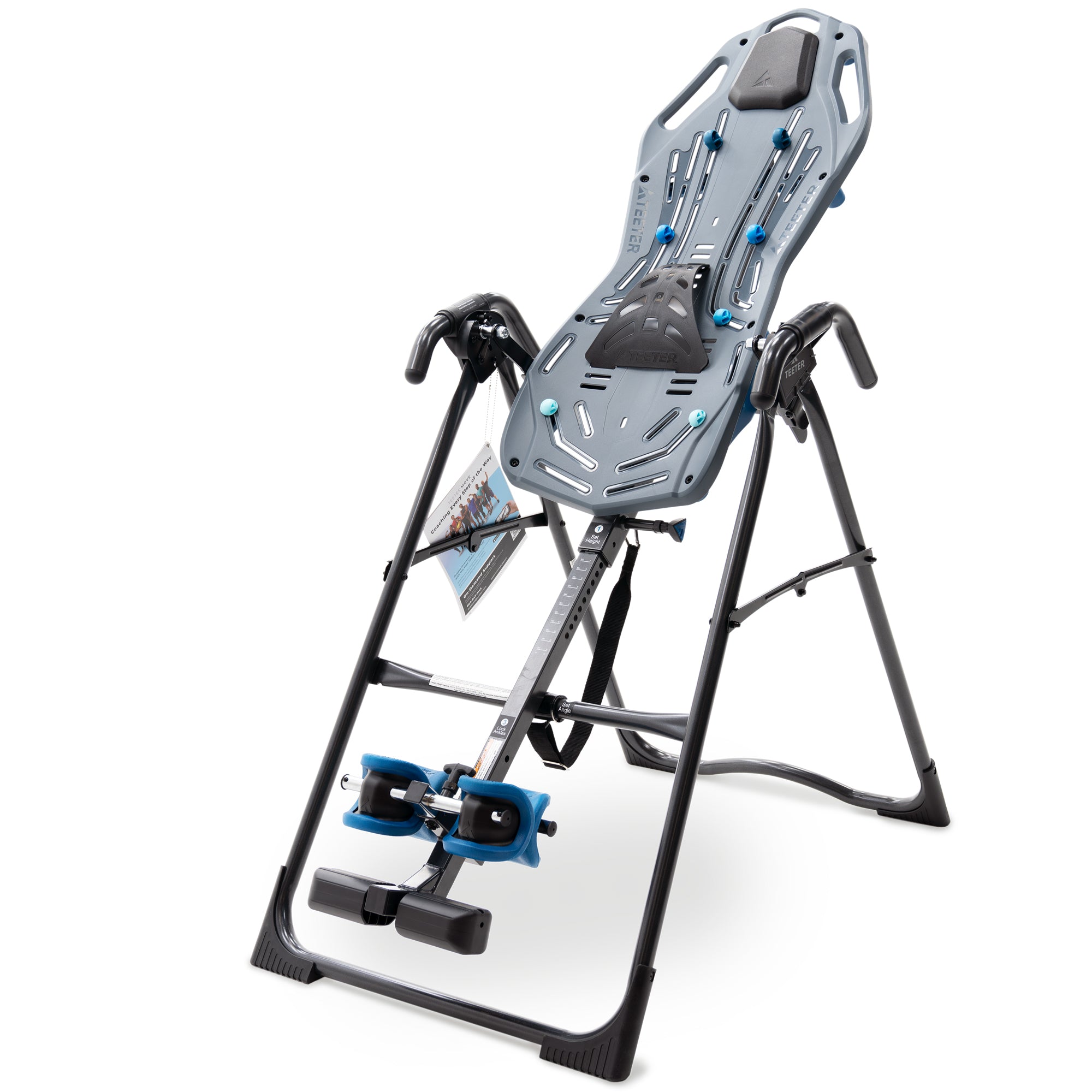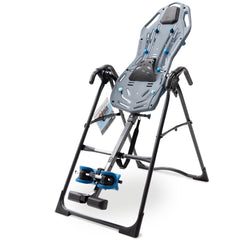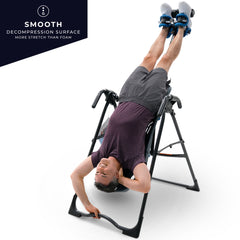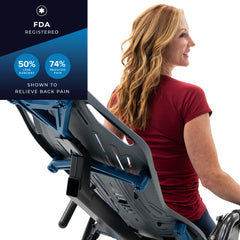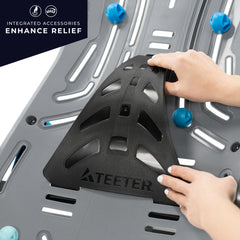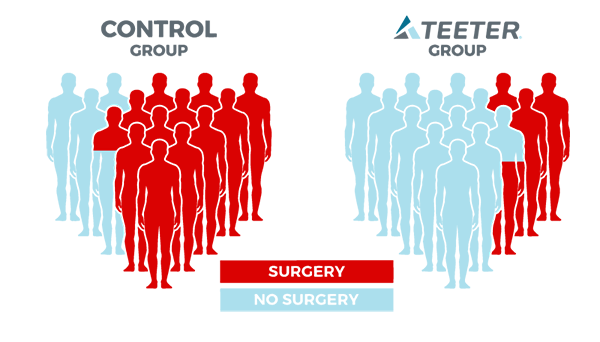End Of Year Sale - Extra Discount Applied At Checkout
End Of Year Sale - Extra Discount Applied At Checkout
End Of Year Sale - Extra Discount Applied At Checkout
End Of Year Sale - Extra Discount Applied At Checkout
End Of Year Sale - Extra Discount Applied At Checkout
End Of Year Sale - Extra Discount Applied At Checkout
End Of Year Sale - Extra Discount Applied At Checkout
End Of Year Sale - Extra Discount Applied At Checkout
End Of Year Sale - Extra Discount Applied At Checkout
End Of Year Sale - Extra Discount Applied At Checkout
End Of Year Sale - Extra Discount Applied At Checkout
End Of Year Sale - Extra Discount Applied At Checkout
Description
xTeeter X1 Inversion Table Features
Grip-and-Stretch Handholds – Sturdy grips integrated with the frame help you enhance decompression and realignment through muscle-relaxing stretches at every angle of inversion.
Stretch Assist Handles – The handles provide a large grip surface to assist the user and an embossed inversion angle guide.
Angle Tether – The adjustable tether allows you to easily pre-determine your maximum angle of inversion or is removeable for full inversion.
Improved Decompression
FlexTech Bed: Made to lengthen and stretch your spine more than other inversion tables, the FitSpine X1 Inversion Table can provide more relief from your back pain issues.
Better than Foam: Other inversion tables that are padded and heavy let your body sink into the foam which stops decompression.
Flexible and Constant Support: The 8-point Floating Suspension System means the bed is not fixed to the steel frame, allowing it to move and flex with the user, providing support no matter the position you are in.
Precision Balancing & Full Lock-Out: The hinge design is engineered so you can effortlessly rotate in and out of inversion with controlled, smooth movement. Allows for a secure lockout in full inversion for advanced exercises and stretching.
Easy Movement and Rotating: Complete stretches and exercises with ease thanks to the unique hinge design that lets you roll in and out of inversion smoothly.
CUSTOMISABLE COMFORT & SUPPORT
Acupuncture Nodes & Lumbar Bridge – Experience deeper decompression by placing these anywhere along the bed to help relieve pressure on problem areas and support your lower back better during your session.
Teeter Head Pillow – The included foam head pillow can be added or removed based on your desire and can provide extra support during your inversion therapy session.
Ergo-Embrace Ankle SupportsTM Supports – To ensure you’re always comfortable when using the Teeter FitSpine X1 Inversion table, Ergo-Embrace Ankle Supports are present to evenly distribute any pressure by wrapping around the entire ankle. You are able to adjust the foot platform's height with the ankle comfort dial to ensure you always feel supported.
Using the FitSpine X1 At Home
There are many ways to carry out your inversion therapy at home on a regular basis thanks to the range of additional services that Teeter provides.
Use The TeeterLink App: Get the most out of your inversion therapy sessions with the TeeterLink app that helps you schedule and track your sessions whilst providing in-depth how-to videos to improve your knowledge.
On Demand Videos: Get access to on demand videos either online or via DVD, all designed to help you improve your mobility flexibility and overall inversion therapy journey.
Knowledgeable Inversion Experts: Get access to Inversion Experts online or over the phone. We’re here to help you every step of the way.
SAFETY-CERTIFIED & BUILT TO LAST
Safety Certified: Teeter Inversion Tables outperform the competition when it comes to endurance, ease of assembly and rotation control. Having been safety certified by UL, you can’t go wrong with Teeter.
Unmatched Build Quality: Every Teeter Inversion Table is made from heavy-duty steel, helping us achieve our unmatched safety rating. Our heavy-duty steel guarantees long-lasting durability and safety.
Look for the Label! Meeting the UL Standard is one thing, but maintaining it is another. The only way to verify an inversion table continues to manufacture to important safety standards is to look for the actual UL label on the product itself.
A 5-Year Guarantee With Every Table: You can put your trust in Teeter with a 5-year guarantee provided with every purchase, and rest assured that your inversion therapy will last for years.
THE ONLY FDA-REGISTERED INVERSION TABLE
Teeter Inversion Tables are registered as a Class 1 Medical Device with the FDA, designed to provide traction to the spine while stretching para-spinal muscles.
Indicated for relief of back pain, sciatica, herniated discs, muscle tension and spasm, degenerative disc disease, spinal degenerative joint disease, spinal curvature due to tight muscles, spinal stenosis and facet syndrome.
TIPS TO BECOME A PRO
-Pre-set the Angle: To begin, set your tether to a modest angle of 20-30 degrees so you know that the inversion table will stop rotation barely beyond horizontal. You can then focus on relaxing and adjusting to inversion.
-Enlist a Spotter: Ask a friend to stand near the inversion table until you are comfortable with controlling its rotation.
-Breathe: Close your eyes and take a few deep breaths to help your body relax. It may take a few inversion sessions before you are able to overcome your automatic “flight or fight” response – be patient and keep working at it. Getting your muscles to release is the only way you will begin to experience the benefits.
-Listen to Your Body: Only do what is comfortable to you. Inversion is not a “no pain, no gain” activity. What works for others may not be ideal for you. If you feel you’ve had enough, return upright to rest.
-Prevent Dizziness/Nausea: When returning upright, be sure to stop at the horizontal position (0 degrees) for 15-30 seconds or more. This allows your inner ear to readjust to being upright, and it also allows your back to “recompress” gently. Wait for a while after you’ve eaten before inverting.
-Make Changes Gradually: Increase your angle and/or duration of inversion in small increments.
-Do It Often! Inverting on a regular basis is how you will experience the most benefits.
Additional Information
xNam tempus turpis at metus scelerisque placerat nulla deumantos solicitud felis. Pellentesque diam dolor, elementum etos lobortis des mollis ut risus. Sedcus faucibus an sullamcorper mattis drostique des commodo pharetras loremos.Donec pretium egestas sapien et mollis. Pellentesque diam dolor cosmopolis etos lobortis.
- Comodous:
- Comodous in tempor ullamcorper miaculis
- Mattis laoreet:
- Pellentesque vitae neque mollis urna mattis laoreet.
- Divamus de ametos:
- Divamus sit amet purus justo.
- Molestie:
- Proin molestie egestas orci ac suscipit risus posuere loremous
Shipping & Return
xReturns Policy
You may return most new, unopened items within 30 days of delivery for a full refund. We'll also pay the return shipping costs if the return is a result of our error (you received an incorrect or defective item, etc.).
You should expect to receive your refund within four weeks of giving your package to the return shipper, however, in many cases you will receive a refund more quickly. This time period includes the transit time for us to receive your return from the shipper (5 to 10 business days), the time it takes us to process your return once we receive it (3 to 5 business days), and the time it takes your bank to process our refund request (5 to 10 business days).
If you need to return an item, simply login to your account, view the order using the "Complete Orders" link under the My Account menu and click the Return Item(s) button. We'll notify you via e-mail of your refund once we've received and processed the returned item.
Shipping
We can ship to virtually any address in the world. Note that there are restrictions on some products, and some products cannot be shipped to international destinations.
When you place an order, we will estimate shipping and delivery dates for you based on the availability of your items and the shipping options you choose. Depending on the shipping provider you choose, shipping date estimates may appear on the shipping quotes page.
Please also note that the shipping rates for many items we sell are weight-based. The weight of any such item can be found on its detail page. To reflect the policies of the shipping companies we use, all weights will be rounded up to the next full pound.
- Choosing a selection results in a full page refresh.
